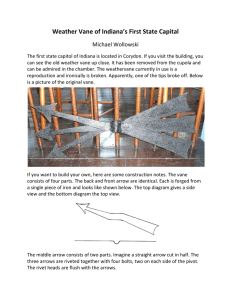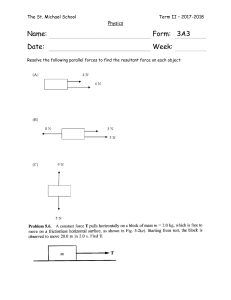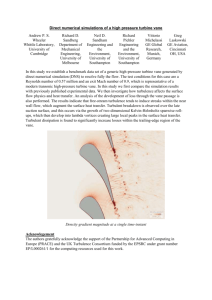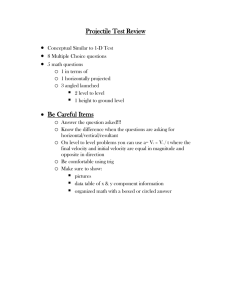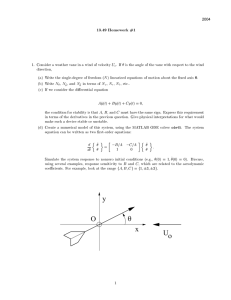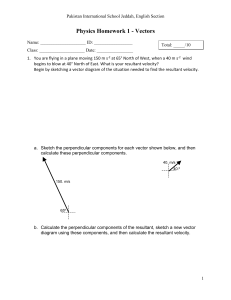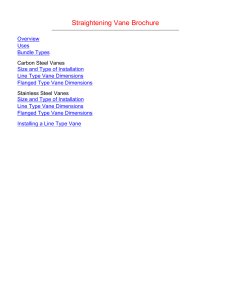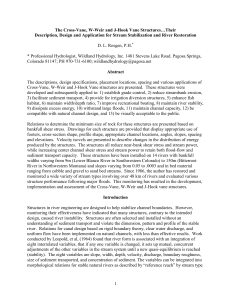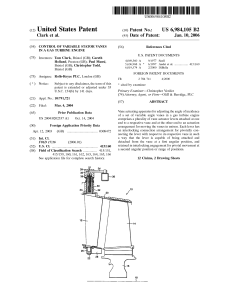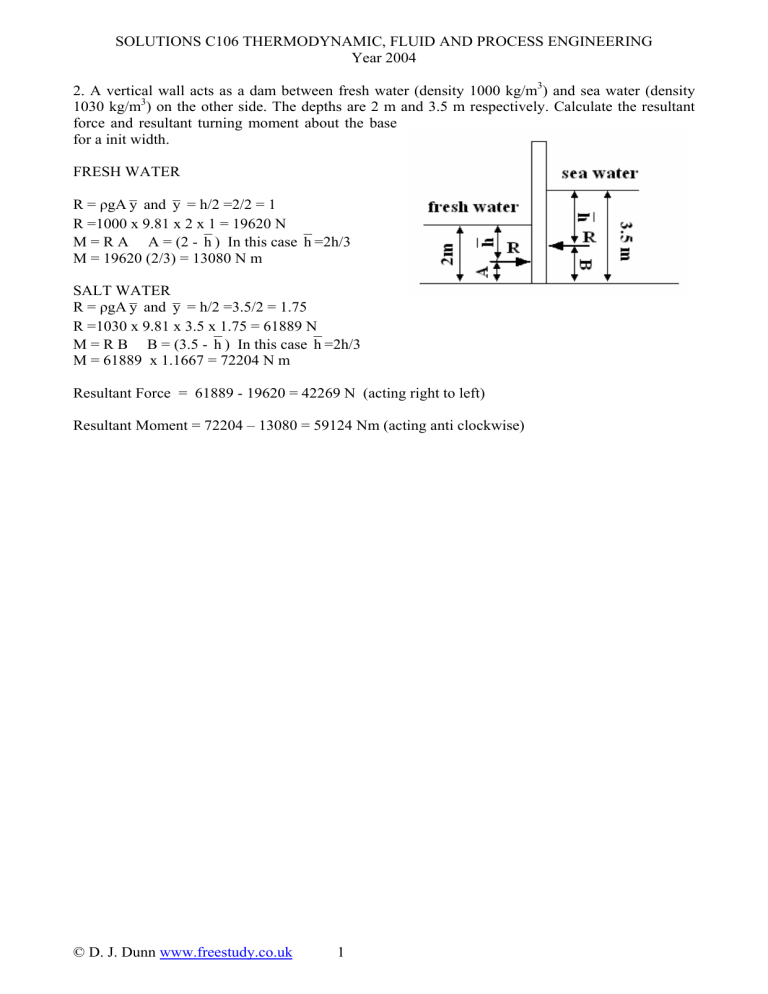
SOLUTIONS C106 THERMODYNAMIC, FLUID AND PROCESS ENGINEERING Year 2004 2. A vertical wall acts as a dam between fresh water (density 1000 kg/m3) and sea water (density 1030 kg/m3) on the other side. The depths are 2 m and 3.5 m respectively. Calculate the resultant force and resultant turning moment about the base for a init width. FRESH WATER R = ρgA y and y = h/2 =2/2 = 1 R =1000 x 9.81 x 2 x 1 = 19620 N M = R A A = (2 - h ) In this case h =2h/3 M = 19620 (2/3) = 13080 N m SALT WATER R = ρgA y and y = h/2 =3.5/2 = 1.75 R =1030 x 9.81 x 3.5 x 1.75 = 61889 N M = R B B = (3.5 - h ) In this case h =2h/3 M = 61889 x 1.1667 = 72204 N m Resultant Force = 61889 - 19620 = 42269 N (acting right to left) Resultant Moment = 72204 – 13080 = 59124 Nm (acting anti clockwise) © D. J. Dunn www.freestudy.co.uk 1 SOLUTIONS C106 THERMODYNAMIC, FLUID AND PROCESS ENGINEERING Year 2004 Q7 A jet of water flows smoothly onto a stationary curved vane which turns it through an angle of 50o as shown. The jet flows onto the vane with a velocity of 40 m/s and a circular cross section of diameter 0.04 m. The water leaves the vane with a velocity of 36 m/s. Calculate the magnitude and direction of the force on the vane. Neglect gravitational effects. The vector diagram is constructed as shown. Find the change in velocity ∆v C = 36 sin 50 = 27.577 B = 40 – A = 16.86 A = 36 cos 50 = 23.14 ∆V = √(27.5772 + 16.862) = 32.32 m/s Mass flow = ρ A v = 1000 x π x 0.042/4 x 40 = 50.265 kg/s F = m ∆v = 1625 N θ = tan-1(27.577/16.86) = 58.6o The force on the vane is the opposite direction to ∆V © D. J. Dunn www.freestudy.co.uk 1

